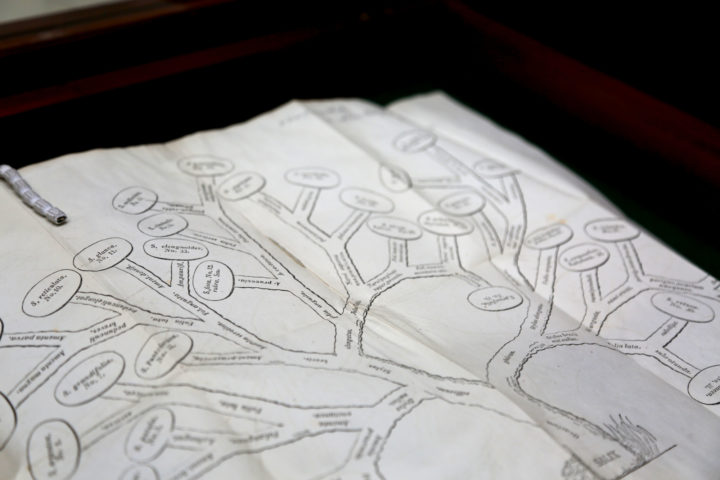Trees of Life – A Visual History
Published on 28th April 2017

The idea of a tree as a metaphor for understanding and graphically displaying relationships among organisms is most often attributed to Charles Darwin (1809–1882), who fully developed the notion in his 1859 Origins of species by means of natural selection. However the concept is considerably older, and can be traced back to the Greek philosophers Aristotle and Plato, and the Great Chain of Being, which was developed throughout the Middle Ages and well into the 18th century.

As part of the launch of a new explorer for the complete tree of life produced by the UK charity OneZoom, a display in the Library of the Linnean Society explores the visual history and wide variety of forms of trees of life. The display starts from Carl Linnaeus (1707–1778) and his use of dichotomous diagrams, which were the ubiquitous amongst 18th century naturalists. It then explores other forms of displaying relationships between organisms: Charles Bonnet's (1720–1793) staircase Great Chain of Being, or Scala naturae (ladder of nature), which portrays the temporal order in which God created life on Earth, with man at the top; George Louis Leclec de Buffon's (1707–1788) genealogical diagram of the races of dogs; and early evolutionary trees such as Nicolas Charles Seringe's (1776–1858) dichotomous branching tree representing the species of the willows of Switzerland (genus Salix) or Antoine-Nicolas Duchesne's (1747–1827) upside-down tree of nine races or varieties of strawberries.

The first concept of a tree of life as a diagram that shows the evolutionary divergence or branching of groups of organisms through time was first drawn by Jean-Baptiste Lamarck (1744–1829) in 1809, fifty years before Darwin’s famous branching diagram. The end of the 19th century and early 20th century signalled the end of all other ways of displaying relationships between organisms in favour of the tree of life. Some biologists were great tree makers, such as Ernst Haeckel (1834–1919), who drew hundreds of visually striking genealogical trees to which specific biological taxa were assigned.
Over the last century, the discovery of genetics and molecular biology have made the tree of life one of the most important organizing principles in biology. Attempts have been made to design a universal tree of life, most notably by David Mark Hillis (1958–), in the form of a radial branching diagram. But even an approximation of the full scale of the tree has remained elusive.
'Trees of Life: a Visual History' is a free display in the Reading Room of the Library of the Linnean Society. The Library is open Monday to Friday, 10am to 5pm, and accessible to all. It is recommended to contact us before your visit, as the Library is sometimes closed for functions.
Isabelle Charmantier, Deputy Librarian
Reference
PIETSCH, Theodore W. Trees of Life : A Visual History of Evolution. Baltimore, Md.: Johns Hopkins University Press, 2012.
